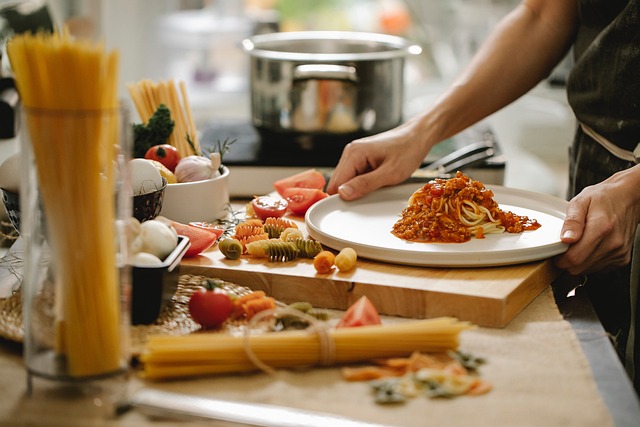Why Spices Matter More Than You Think
There’s good cooking, and then there’s the kind that lingers—on the tongue and in memory. The difference? Spices. Not just the kind that burn, but those that build. Nutmeg in a béchamel. Cumin catching heat in hot oil. Even a whisper of cardamom tucked into a cake. Spices give food dimension. They don’t shout, but they don’t go unnoticed.
Dig deeper, and you realize seasoning has roots far beyond flavor. Spices are cultural markers—saffron and cinnamon carried across continents and centuries, shaping cuisines and traditions. They tell you where a dish comes from, and often who made it. They’re history, identity, and expression—all packed into a pinch.
What many underestimate is the role spices play in balance. It’s not about adding heat for the sake of drama. It’s about depth, aroma, subtle contrasts that make each bite count. The best cooks know: seasoning is the translator between ingredients and impact. Used right, it turns food into experience.
You don’t need dozens of spices or fancy blends to get started. What you do need is attention, intention, and the willingness to experiment. Good cooks follow instructions. Unforgettable ones listen to what their ingredients are saying—and then season accordingly.
The Foundation: Knowing Your Spice Rack
Before you can cook with confidence, you need to know what’s in your arsenal. Spices aren’t just about heat or color—they each bring something distinct to the table. Here’s a simple way to break it down:
- Warming spices like cinnamon, nutmeg, and allspice add cozy depth—they’re what makes chai or a winter stew feel like a blanket.
- Earthy spices include turmeric, cumin, and coriander. These bring grounding notes and are the backbone of a lot of savory dishes.
- Pungent spices like mustard seeds, pepper, and wasabi hit you with bold, immediate flavor—sharp and unmistakable.
- Aromatic spices such as cardamom, fennel, and star anise hit you first with their scent before the flavor even registers.
- Sweet spices, which include vanilla and mace, lend subtle richness and natural sweetness to both savory and dessert dishes.
As for whole vs. ground—here’s the short version: whole spices last longer and deliver more complex flavor when cooked low and slow or toasted. They’re great for marinades, broths, or spice mixes. Ground spices, on the other hand, are convenient and ideal for fast cooking or baking. Just remember they lose their punch faster, so buy in small batches and keep them sealed tight.
Freshness matters more than you think. A dusty jar of paprika from three years ago won’t do your chili any favors. Spices dull with time—aromas fade, bitterness creeps in, and flavors blur. If you want real impact with your cooking, check the scent. No smell? No flavor. Toss it and restock with purpose.
Technique 1: Blooming Spices in Oil
Blooming is a simple move with outsized impact. It means heating spices in oil to unlock fat-soluble compounds—aromas, flavors, depth. Once you try it, it’s hard to go back. This one trick can take your food from “fine” to standout with almost zero extra effort.
Here’s how you do it:
- Start with whole or ground spices—whichever you’re using, just make sure they’re fresh. Stale spice has nothing left to give.
- Heat a neutral oil (or a flavored one if you’re feeling bold) in a pan over medium. Not smoking hot—just shimmering.
- Add the spices. Stir. Within seconds, they’ll sizzle, darken slightly, and send up a strong aroma. That’s the moment. Let them toast for 30 seconds to a minute, then move quickly to the next step in your recipe. Don’t walk away—it can go from golden to scorched fast.
Blooming works best when using oils that carry and enhance flavor. Ghee, coconut oil, and avocado oil are perfect for deeper, richer blends—think garam masala or five-spice. Extra virgin olive oil and grapeseed shine with lighter, aromatic spices like coriander, fennel, or cumin seeds.
The goal isn’t to drown the dish in oil. It’s to use fat as a flavor vehicle. And once you bloom, the flavor rides all the way through the dish.
Technique 2: Layering Flavors
Spices don’t just bring heat or aroma—they build structure. Layering spices throughout the cooking process allows flavors to evolve, deepen, and surprise. Think of it like composing music: each note (or spice) contributes to a balanced, flavorful whole.
Why Staging Matters
Adding all your spices at once may be convenient, but it often leads to flat flavors. Layering creates complexity and allows the spice to interact differently with other ingredients depending on when it’s added.
- Early-stage spices infuse the foundational ingredients (like onions, garlic, or oil) with depth
- Mid-stage spices simmer with liquids or proteins to enhance cohesion
- Late-stage spices deliver brightness, nuance, or a final aromatic lift
Base Spice Mix vs. Finishing Touch
One of the most effective ways to layer flavor is to divide your spice quantities into two parts:
Base Spice Mix:
These are spices added during the initial stages of cooking—usually bloomed in oil or mixed with aromatics.
- Examples: cumin, coriander, turmeric, paprika
- Purpose: establish base flavor and warmth
Finishing Touch:
These are spices (or spice blends) sprinkled in at the end, just before serving or right after cooking stops.
- Examples: garam masala, nutmeg, sumac, fennel powder
- Purpose: enhance aroma, balance richness, and provide that final spark
Real-World Examples:
Curries:
- Start by blooming cumin seeds and turmeric with onions.
- Finish with a pinch of garam masala and kasuri methi (dried fenugreek) after turning off the heat.
Stews:
- Build depth with bay leaves, black peppercorns, and smoked paprika early on.
- Add a dash of ground allspice or cinnamon after simmering for a warm, rounded finish.
Rice Dishes:
- Infuse the cooking oil with cardamom and cloves at the start.
- Garnish with saffron threads or toasted fennel after fluffing the rice.
Key Takeaway
Layering isn’t just a technique—it’s an approach to thoughtful cooking. When you understand where each spice shines in the timeline of a dish, you unlock flavors that go from good to unforgettable.
Technique 3: Grinding Your Own Blends
Pre-ground spice blends are convenient. They’re also usually lifeless. The problem isn’t just age—it’s that the moment a spice is ground, it starts losing its essential oils, the core of its flavor and aroma. Store-bought blends often sit on shelves for months (or years), dulling down into something that looks the part but doesn’t perform in the pan.
Grinding your own spices is one of the simplest upgrades you can make in the kitchen. Mortar and pestle gives you control and texture—great for rustic blends and smashing fibrous ingredients like cardamom pods or cinnamon bark. Spice grinders (a solid coffee grinder you’re willing to dedicate to spices does the job) are faster and ideal when you need a fine, even grind. Either tool, used right, lets your spices speak in full voice.
Once you start crafting your own blends, there’s no going back. Garam masala, when made fresh, hits with warmth and balance—no bitter edge, no staleness. Ras el hanout becomes a floral, earthy powerhouse with real subtlety when you control the ratios. Homemade berbere packs smokiness, fire, and soul. These aren’t one-size-fits-all mixes; they evolve in your hands, tailored to your kitchen and palate. And that’s the point: spice blends should work for you, not the other way around.
Technique 4: Pairing Spices Like a Pro
Flavor pairing comes down to two big ideas: contrast and complement. Use contrast when you want to jolt the palate—think spicy heat against something sweet, like chili and chocolate. Complementary flavors, on the other hand, build depth by reinforcing shared notes. Cinnamon and nutmeg are a classic combo because they both lean warm and woody, creating a cozy baseline.
Some pairings just make sense. Cumin and coriander ride well together for earthy, citrusy warmth. Fennel and black pepper can balance licorice sweetness with sharp bite. Bay leaves and cloves bring a subtle backbone to slow-cooked dishes, each enhancing the other’s quiet strength.
But the bold choices—the ones that turn heads—are where things get interesting. Smoked paprika with cardamom? Try it in a marinade. Star anise with ginger in a rice dish? Surprisingly rich. Pushing past the safe zone means occasionally failing, but it also means discovering flavor combinations that most people wouldn’t dream of.
Start with what you know, then add one wildcard. Keep notes. Let your taste memory grow. That’s how the pros build signature flavor.
Technique 5: Using Spice to Elevate Sweet Dishes
At first glance, desserts and spices might seem like unlikely partners. But a well-placed dash of the right spice can take a sweet from simple to striking. Cinnamon, cardamom, star anise, and clove aren’t just fall clichés—they’re workhorses for adding aroma, warmth, and contrast that make sugar sing without stealing the spotlight.
The trick is restraint. You’re not trying to turn your vanilla tart into a chai bomb. A pinch of cardamom in a cream filling or a dusting of clove on poached pears can push flavors from flat to layered without dominating the dish. Star anise in a chocolate ganache? Unexpected, but it works—offering a subtle licorice note that cuts richness and sharpens the finish.
Think of these spices as flavor amplifiers, not headline acts. They back up sweetness with complexity and balance, especially in recipes that lean heavily on dairy, fruit, or sugar. Want a hands-on example? Brush up on ideas here: Innovative Desserts to Impress Your Guests.
Common Mistakes—and How to Avoid Them
There’s a thin line between bold flavor and a spice bomb that hijacks your dish. Over-spicing is the culinary equivalent of shouting—too much heat, too much bitterness, or just plain chaos. If your dish tastes like you dumped every jar in your cabinet, it’s time to scale back. A good rule: start with less, taste as you go, and layer gradually. Under-seasoning, on the other hand, is the quick path to bland. A well-cooked meal can fall completely flat without enough salt or spice to lift it.
Burnt spices are a different kind of sabotage. Once aromatic oils scorch, they turn bitter—and you can’t un-burn them. If it happens early in the process, salvage the dish by removing the pan from heat immediately and swapping in fresh oil with new spices. If it’s too late in the cook, cut your losses and start over. Better to lose 10 minutes than serve something acrid.
Then there are flavor ruts. One-note cooking happens when you lean too hard on a single spice: everything starts to taste the same. Break out of that by rotating spice blends, experimenting with new base notes, and remembering that acid, fat, and herbs can balance the equation. Variety isn’t just nice—it’s necessary.
Avoiding these traps doesn’t require being fancy. It just means staying alert, tasting often, and knowing when to pull back.
Final Takeaways on Cooking with Spices
Flavor isn’t just a formula—it’s a choice. A good dish follows the rules. A great one breaks them with purpose.
Understanding spice is only half the game. What really elevates your cooking is intention. Know why you’re reaching for cumin instead of coriander. Use chili not just for heat, but to cut through sweetness or fat. None of this requires a culinary degree. Just time, attention, and the drive to make something better.
Start small. Add a pinch, taste, adjust. Play with toasting, blending, layering. Even seasoned chefs build flavor step by step. There’s no shame in trial-and-error—there’s wisdom in it.
In the end, great spice technique isn’t about flash. It’s about making food that lingers. That tastes like something thought through. Once you get a feel for that, every meal becomes a chance to say something—without saying a word.


 As co-founder of FoodHypeSaga. Zyphara merges her creative energy with a passion for food culture and digital innovation. She drives the platform’s vision forward while writing about food trends that shape modern culinary conversations.
As co-founder of FoodHypeSaga. Zyphara merges her creative energy with a passion for food culture and digital innovation. She drives the platform’s vision forward while writing about food trends that shape modern culinary conversations.

